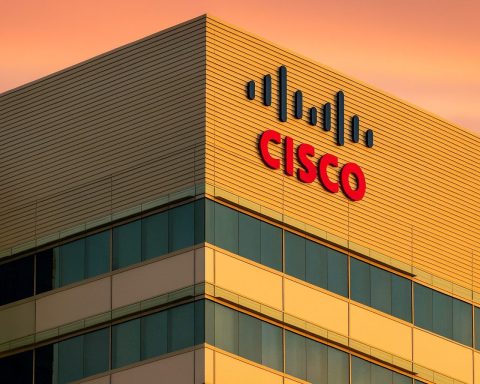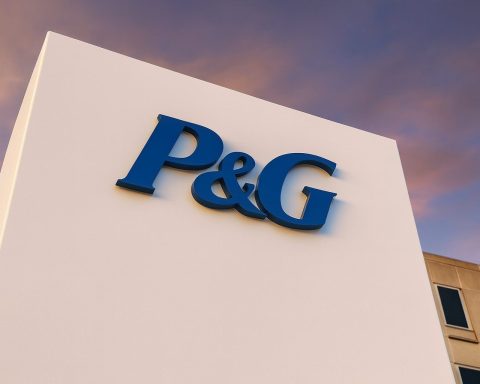Rheinmetall AG’s share price came under heavy pressure on Monday, 24 November 2025, as optimism over a potential peace framework for Ukraine sparked a broad selloff in European defence stocks. Yet the German defence group’s order backlog, new contracts and ambitious 2030 growth plan mean the long‑term “Rheinmetall story” looks very different from today’s red numbers.
Key takeaways for Rheinmetall investors today
- Share price move: Rheinmetall’s primary Xetra listing (ticker often quoted as RHM / RHMG.DE) closed around €1,443, down about 5% on the day, with more than 550,000 shares traded. [1]
- ADR hit harder: The US ADR RNMBY finished near $320.7, a 7.4% drop, extending a multi‑day correction from last week’s highs. [2]
- Sector slump: The STOXX Europe aerospace & defence index fell again and is now at its lowest level in months, as investors reacted to progress on a “refined peace framework” for Ukraine. [3]
- Analyst stance: Despite the selloff, J.P. Morgan today reiterated its Buy/Overweight rating on Rheinmetall with a €2,250 target price – implying very substantial upside from current levels. [4]
- Fundamentals: 9‑month 2025 sales are up about 20% year‑on‑year to €7.5bn, operating profit is up 18%, and the order backlog stands near €64bn, with management confirming full‑year guidance. [5]
- Growth roadmap: Rheinmetall aims to quintuple sales to around €50bn by 2030 with an operating margin above 20%, backed by surging demand for ammunition, vehicles and air defence in NATO countries. [6]
Rheinmetall share price today: how the stock traded on 24 November 2025
On 24 November 2025, Rheinmetall shares spent the day deep in the red:
- Close: about €1,443.00
- Change vs. Friday:–5.03% (from €1,519.50)
- Intraday range: roughly €1,440 – €1,478
- Opening price: about €1,450.50
- Volume: around 551,000 shares, above average turnover. [7]
In the US, the OTC‑traded ADR RNMBY mirrored (and amplified) the move, closing near $320.72, down 7.4% on heavier‑than‑usual volume. [8]
From a short‑term perspective, that means Rheinmetall is now roughly 16% below where it traded around its Capital Markets Day on 18 November, when the stock closed near €1,716. [9]
With a market capitalisation of roughly $66.4bn as of today, Rheinmetall remains one of Europe’s largest listed defence companies despite the pullback. [10]
Why is Rheinmetall stock falling today? Peace framework knocks defence rally
The core driver of today’s decline is not company‑specific, but macro‑political:
- Over the weekend, the US and Ukraine announced they had drafted an “updated” or “refined peace framework” after talks in Geneva on how to end Russia’s invasion. [11]
- European media and wire services report that the framework is still under negotiation, but markets immediately interpreted it as a step closer to a potential ceasefire – and therefore to slower growth in emergency weapons orders. [12]
As a result:
- The STOXX Europe Aerospace & Defence index (.SXPARO) fell again today, extending Friday’s more than 3% slide and leaving the gauge at its lowest level in several months. [13]
- Across the sector, shares of German peers Renk and Hensoldt, as well as Italy’s Leonardo, Sweden’s Saab, and France’s Thales, also traded sharply lower. [14]
- Several outlets, including The Guardian and Ukrainian business site AIN, highlighted that Rheinmetall was among the biggest fallers, with losses around 4–5% by the close – in line with the Xetra data. [15]
In simple terms: today’s drop is the market rapidly repricing the “war premium” embedded in European defence stocks, as traders imagine a world where the Ukraine conflict may eventually move toward a negotiated settlement.
Is the selloff an overreaction? What the sector context says
Even within today’s cautious mood, some analysts argue the market is over‑reacting.
- In a Reuters piece on the sector slump, Morningstar analyst Loredana Muharremi called the reaction “overstated” and stressed that valuations are grounded in structural defence budget increases, not just short‑term Ukraine revenues. [16]
- Another Reuters report today quoted Northrop Grumman executives saying they expect continued growth in Europe even if there is a ceasefire in Ukraine, because countries still need to replenish depleted stockpiles and expand munitions inventories. Northrop specifically highlighted its partnership with Rheinmetall on F‑35 fuselage production in Germany as part of that long‑term build‑up. [17]
That broader backdrop is important:
Even if the Ukraine war enters a political phase, NATO members are committed to higher, long‑duration defence spending. The backlog of delayed procurement programmes – from ammunition to air defence and armoured vehicles – doesn’t disappear overnight because talks in Geneva make progress.
Fundamentals: 9‑month 2025 results and order backlog
Under the surface of today’s price action, Rheinmetall’s recent numbers still look robust.
From the Q3 / 9‑month 2025 publications and related coverage:
- Sales growth: Group sales in the first nine months of 2025 rose about 20% year‑on‑year to €7.5bn, with defence‑related business up 28%. [18]
- Profitability: Consolidated operating profit increased 18% to around €835m, implying an 11.1% operating margin at group level; defence contributed about €825m with a margin around 13.6%. [19]
- Backlog: Total order backlog (including call‑offs under framework agreements) reached roughly €64bn by the end of September and management told Reuters it expects this to approach €80bn by year‑end, helped by pending large orders. [20]
- Q3 snapshot: Q3 sales were about €2.78bn, up 13% but slightly below consensus; net profit of €173m missed expectations, while operating profit of €360m came in just above forecasts. [21]
Despite those mixed quarterly details, management reaffirmed its 2025 guidance, emphasising that procurement delays in Germany are starting to clear as the new federal budget is implemented. [22]
Geographically, Rheinmetall’s own reporting shows that Germany now accounts for about one‑third of sales and two‑thirds of revenue comes from abroad, underlining that the company is not purely a one‑country or Ukraine‑only story. [23]
2030 growth plan: Rheinmetall targets €50bn in annual sales
Just six days ago, at its Capital Markets Day on 18 November 2025, Rheinmetall laid out one of the most ambitious growth plans in the European defence space:
- Sales target: Management is aiming for about €50bn in annual sales by 2030, roughly five times the company’s 2024 revenue of €9.8bn. [24]
- Margins: The goal is an operating margin above 20% by the end of the decade. [25]
- Reorganisation: From 2026, Rheinmetall plans to reorganise into new segments including Naval, Air Defence and Digital, while fully exiting its loss‑making civilian power systems division by around mid‑2026 to sharpen its focus on defence. [26]
- Demand drivers: Management sees particularly strong growth in weapons & ammunition, armoured vehicles and air defence systems, driven by NATO stockpile rebuilding and the need to protect critical infrastructure such as power plants and transport hubs. [27]
According to Reuters, Rheinmetall estimates that protecting Germany’s nearly 2,000 critical‑infrastructure sites alone could represent an air‑defence opportunity measured in tens of billions of euros, reinforcing the logic behind its new Air Defence segment. [28]
Seen against that backdrop, today’s peace‑talk headlines look like short‑term noise layered on top of a very long‑duration investment cycle.
New contracts, plants and operational milestones
Several recent announcements help explain why Rheinmetall is hiring aggressively and investing in new capacity – something that matters when assessing whether today’s selloff is justified.
Lithuania: new 155mm artillery plant on NATO’s eastern flank
On 3 November 2025, Rheinmetall and Lithuania held a groundbreaking ceremony in Baisogala for a new 155mm artillery ammunition plant:
- Planned production of tens of thousands of shells per year.
- Investment of up to €300m and around 150 new jobs.
- Operations expected to begin in 2026, with ramp‑up from 2027. [29]
The facility will be run by the joint venture Rheinmetall Defence Lietuva and is explicitly framed as strengthening NATO’s industrial base on its eastern flank. [30]
Romania: propellant‑powder joint venture tackles a strategic bottleneck
On 2 November 2025, Rheinmetall announced a joint venture with Romanian state‑owned Pirochim Victoria to produce propellant powder and modular charges:
- New entity: Rheinmetall Victoria SA, majority‑owned (51%) by Rheinmetall.
- Investment of more than €500m.
- Around 700 jobs to be created.
- Production expected from 2028, with capacity for about 300,000 modular charges and additional powder to serve local demand. [31]
CEO Armin Papperger described propellant powder as a “strategic bottleneck” for the industry and said the project contributes to an ambitious goal of 20,000 tonnes of annual powder capacity by 2030. [32]
German Army Combat Training Centre modernisation
On 19 November 2025, Rheinmetall confirmed a contract worth around €61m to modernise the Bundeswehr’s Army Combat Training Centre (GÜZ) in Saxony‑Anhalt:
- The project will integrate the Bundeswehr’s “Digitalisation of Land‑based Operations” (D‑LBO) project into the central training hub.
- Upgrades include a new 5G broadband radio infrastructure, modernised battle‑management system integration and enhanced command‑and‑control visualisation.
- The contract runs through early 2028 and further cements Rheinmetall’s role in the Bundeswehr’s digital‑transformation agenda. [33]
Support to Ukraine: Skynex delivered, Skyranger on the way
Rheinmetall has also hit several milestones tied to support for Ukraine:
- By 19 November, the company had delivered all four Skynex short‑range air‑defence systems pledged by the German government; these are now protecting power plants in western Ukraine against drones and cruise missiles. [34]
- Rheinmetall is preparing to deliver its Skyranger 35 armoured air‑defence system by the end of the year, financed by an unnamed EU country using frozen Russian assets. [35]
Separately, reports earlier this month suggested Romania is nearing a multi‑billion‑euro deal with Rheinmetall to locally produce tanks and other heavy equipment – another sign of how central the company has become to Eastern Europe’s defence build‑up. [36]
Near-term mega‑orders and supply-chain shift
- In its Q3 coverage, Reuters noted that Rheinmetall is in the final stages of negotiating a multibillion‑euro ammunition contract, which would further swell its order backlog. [37]
- On 18 November, CEO Armin Papperger told Reuters the company plans to shift most of its steel sourcing back to Germany and Europe, moving away from suppliers in India and China as part of its new mid‑term targets. [38]
These moves underline that Rheinmetall is investing for decades, not just for the next quarter.
Analyst sentiment: J.P. Morgan keeps “Buy” rating and high target
One of the most notable Rheinmetall‑specific headlines today came from J.P. Morgan:
- Analyst David H. Perry reiterated his Buy / Overweight stance on Rheinmetall and left his target price at €2,250. [39]
At today’s approximate close of €1,443, that target implies potential upside of around 56% if the bank’s assumptions play out.
Market‑wide data compiled by platforms such as MarketScreener and Investing.com still show a broadly positive analyst consensus, with average 12‑month targets comfortably above €2,100 per share, though estimates vary by house and can change quickly. TechStock²+1
At the same time, several analysts have warned that after years of exceptional gains, volatility cuts both ways: policy shifts, peace deals or procurement delays can produce sharp pullbacks, as this month vividly demonstrates. [40]
Hiring boom: “flooded” with applicants
One small but telling datapoint making the rounds today:
According to an item summarising Wall Street Journal reporting, Rheinmetall received about 120,000 job applications for roughly 3,000 open positions in Germany in the first half of 2025 – a sign of how attractive the group has become for engineers and skilled workers. [41]
For investors, this matters because Rheinmetall’s 2030 growth plan depends on staffing dozens of new plants and programs. Strong employer appeal can make execution easier – though it also highlights how much the company is scaling up its operations.
Key risks for Rheinmetall shareholders to watch
Even with a solid order book and bullish guidance, today’s move is a reminder that Rheinmetall is not a low‑risk stock. Key risks include:
- Geopolitical and budget risk
If a Ukraine peace deal leads governments to slow or reprioritise defence budgets, Rheinmetall’s 2030 targets could prove too optimistic, even if basic spending remains higher than pre‑war. [42] - Execution on huge capex and plant build‑out
Delivering new ammunition plants in Lithuania and Romania, modernising training centres and scaling logistics all require flawless execution. Any delays or cost overruns could weigh on margins and cash flow. [43] - Working‑capital and cash‑flow strain
Rheinmetall’s Q3 report already showed negative free cash flow due to heavy investment, inventory build‑up and delayed orders from Germany. That strain could persist if customers push deliveries to the right. [44] - Valuation and sentiment swings
After a multi‑year rally that turned Rheinmetall into a DAX heavyweight, small changes in sentiment can drive double‑digit percentage swings in the share price – exactly what we’ve seen since mid‑November. [45] - Regulatory, export‑control and ESG pressure
As a high‑profile arms manufacturer, Rheinmetall faces ongoing scrutiny over export permits, human‑rights concerns and environmental standards. These factors can slow or block deals, especially outside NATO.
FAQ: Rheinmetall Aktie today (24 November 2025)
1. Why did Rheinmetall stock drop about 5% today?
Because markets reacted to progress in US‑Ukraine peace talks, which investors fear could reduce the urgency of new weapons orders. This hit all European defence names, not just Rheinmetall. The sector index fell again today, and several sources reported Rheinmetall among the day’s biggest losers in the STOXX 600. [46]
2. Is Rheinmetall still growing despite today’s selloff?
Yes. 9‑month 2025 figures show double‑digit growth in sales and operating profit, a backlog near €64bn that management expects to climb further, and a confirmed 2025 outlook. On top of that, the company is targeting €50bn in annual sales by 2030 with >20% operating margins, underpinned by multiple new plants and contracts. [47]
3. How dependent is Rheinmetall on the Ukraine war?
Rheinmetall clearly benefits from Ukraine‑related demand (for example Skynex and Skyranger orders), but its broader business is tied to NATO‑wide rearmament and long‑term stockpile rebuilding. Germany now accounts for about a third of sales; the rest comes from other European and international customers. Even US defence firms like Northrop Grumman expect European demand to stay strong after any ceasefire, as stockpiles need rebuilding and new capabilities like air defence systems are rolled out. [48]
4. Should you buy Rheinmetall stock after today’s dip?
That is a decision only you (ideally with a qualified financial adviser) can make.
What we can say is:
- Analysts such as J.P. Morgan still rate the stock “Buy/Overweight”, with targets far above today’s price. [49]
- The company has strong growth ambitions and a large backlog, but also faces political, execution and valuation risks that can produce sharp swings in either direction. [50]
Always consider your risk tolerance, investment horizon, diversification and local regulations before making any trading decision. This article is informational only and is not investment advice.
References
1. www.investing.com, 2. stockanalysis.com, 3. www.reuters.com, 4. www.marketscreener.com, 5. www.rheinmetall.com, 6. www.reuters.com, 7. www.investing.com, 8. stockanalysis.com, 9. www.investing.com, 10. capital.com, 11. www.reuters.com, 12. www.theguardian.com, 13. www.kitco.com, 14. www.reuters.com, 15. www.theguardian.com, 16. www.reuters.com, 17. www.reuters.com, 18. www.rheinmetall.com, 19. www.rheinmetall.com, 20. www.rheinmetall.com, 21. www.reuters.com, 22. www.rheinmetall.com, 23. www.rheinmetall.com, 24. www.reuters.com, 25. www.reuters.com, 26. www.reuters.com, 27. www.reuters.com, 28. www.reuters.com, 29. www.rheinmetall.com, 30. www.rheinmetall.com, 31. www.rheinmetall.com, 32. www.rheinmetall.com, 33. euro-sd.com, 34. united24media.com, 35. united24media.com, 36. thedefensepost.com, 37. www.reuters.com, 38. www.reuters.com, 39. www.marketscreener.com, 40. www.investing.com, 41. www.investing.com, 42. www.reuters.com, 43. www.rheinmetall.com, 44. www.rheinmetall.com, 45. www.investing.com, 46. www.reuters.com, 47. www.rheinmetall.com, 48. www.rheinmetall.com, 49. www.marketscreener.com, 50. www.rheinmetall.com










